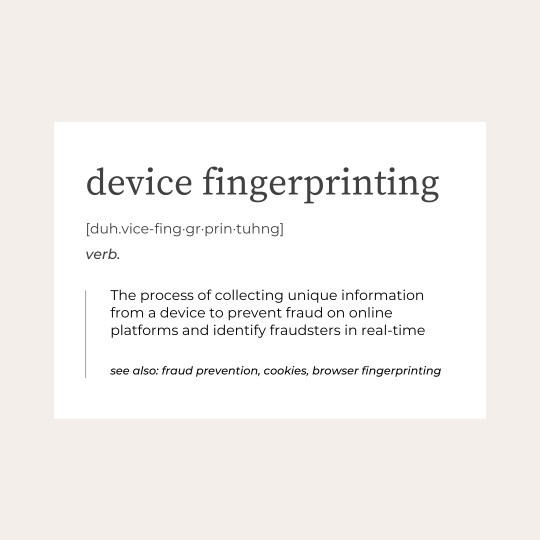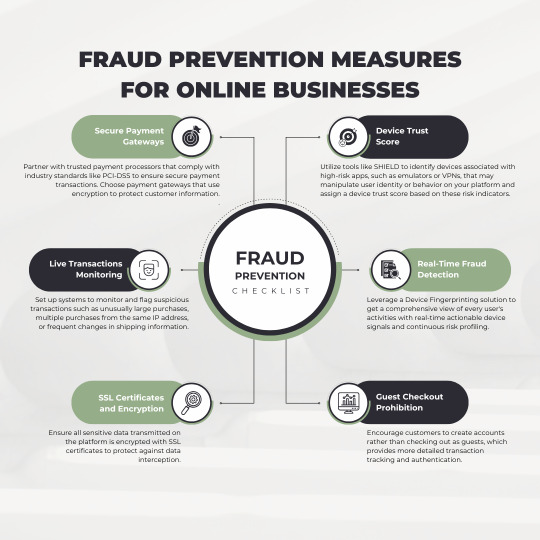I am passionate about the intersection of digital platforms, cybersecurity, and fraud detection. With years of experience exploring, analyzing, and implementing security strategies across various digital ecosystems, I work to ensure users and businesses can engage online safely and efficiently.
Don't wanna be here? Send us removal request.
Text

Businesses Can Handle 100 Problems—Until One Fraud Hits.
Once fraud hits, every other business problem suddenly feels small—because fraud impacts every aspect of your business and causes massive damage in very little time.
Fraud ain't a single problem or a one-time event. It brings 100 new problems that businesses must deal with instantaneously or else they'll be hit so hard that it'll be impossible to return back from it.
How often we've seen well-established businesses hit by fraud and never been able to cope with it. Businesses need to have well-sought fraud prevention strategies in place to deal with fraud and fraudsters head on.
Image Credits: AppSense Mohsin
#fraud detection#fraud prevention#cybersecurity#online business#digital#fraud#artificial intelligence#digital business#business#strategies#digital solutions#device fingerprinting#device intelligence#browser fingerprinting
0 notes
Video
youtube
Ignoring Fraud Leaves Devastating Effects on Digital Business and Mobile...
#youtube#fraud#fraudprevention#frauddetection#cybersecurity#digital#online business#device fingerprinting#browser fingerprinting#device intelligence#fraud detection#fraud prevention#digital business#scam#scammers#scam alert#fraudsters
0 notes
Text

Device fingerprinting is a powerful tool for online platform owners and managers to protect their websites or apps from fraud, validate user identities, and enhance digital advertising efforts. It involves collecting distinct data points from a user's device each time they access the platform. These data points, like screen resolution, browser version, or IP address, create a unique "fingerprint" for the device. This fingerprint allows businesses to compare devices across sessions and assess the risk associated with particular interactions.
Just as a human fingerprint is used to identify individuals, a device fingerprint can track a specific device as it moves between different apps or websites. This capability is crucial for identifying and preventing fraudulent activity in real time.
Device fingerprint plays a critical role in preventing fraud on digital platforms by assessing the level of risk throughout the customer journey, from registration to transaction. By continuously profiling user sessions, the platform can detect unusual patterns or behaviors that indicate potential fraud. This ongoing evaluation enables fraud detection teams to take immediate action—automatically blocking high-risk devices or flagging them for further manual review. This proactive approach ensures that businesses can make informed decisions, minimizing the risk of fraudulent activity while maintaining a smooth user experience for legitimate customers.
Device fingerprinting, combined with machine learning and AI, empowers online platforms to detect and adapt to emerging fraud patterns in real-time. This powerful combination continuously strengthens security, staying one step ahead of evolving threats.
#cybersecurity#fraud detection#fraud prevention#online business#artificial intelligence#digital#fraud#machine learning#risk management#damage control#smart thinking#definition
0 notes
Text

For online businesses, there is a dire need for effective fraud prevention measures to dilute the impact of fraud.
Digital platforms are exposed to fraud more than ever!! Online fraud has become a common phenomenon and fraudsters are becoming more and more harmful with every passing day. The traditional fraud prevention strategies & solutions are not living up to the current fraud trends thus forcing platforms to look towards Device Fingerprinting and AI / ML-based fraud detection solutions.
#cybersecurity#fraud detection#fraud prevention#online business#artificial intelligence#digital#fraud
2 notes
·
View notes
Text

This infographic shares 10 major applications of device fingerprinting in fraud detection.
Device Fingerprinting technology has been a masterclass in the field of online fraud detection. After cookies lost their credibility, online businesses have turned to this technology to Stop Fraud at the Root with Device-First Fraud Intelligence.
Device fingerprinting is the now and the future of online fraud detection due to its effectiveness in identifying online threats and keeping businesses vigilant against all forms of fraud.
#cybersecurity#fraud detection#fraud prevention#online business#fraud#digital#artificial intelligence
0 notes
Text

Including Artificial Intelligence in the fraud detection strategy is one of the smartest decisions digital platform owners can take to prevent fraud from affecting businesses and users.
AI can serve as a beacon of user device intelligence for fraud detection systems by analyzing complex fraud patterns and helping businesses formulate efficient strategies to defend against fraud.
AI-based fraud detection works in two steps:
Risk Analysis: AI uses historical data to predict potential fraud risks in the future, proving helpful for digital platforms in identifying red flags and abnormalities.
Risk Prediction: It can learn from previous fraud incidents and continuously improve its fraud detection capabilities
Investing in anti-fraud solutions based on AI is a smart decision. It enhances resilience and reduces the likelihood of the same fraud recurrence due to its dynamic approach. With AI, digital platforms can also significantly reduce the time taken to detect fraud.
So what do you think?
#fraud detection#cybersecurity#fraud prevention#artificial intelligence#digital#fraud#online business
0 notes
Text

Here are 9 most common types of eCommerce fraud prevalent in today's era.
Fraud in eCommerce is challenging and learning how to deal with fraud is a necessity for any eCommerce business to survive.
0 notes
Text

These are the 7 necessary features of an ideal fraud prevention solution.
Dealing with online fraud can be tricky for digital organizations. As fraudsters evolve with new technologies, your fraud detection solution should too. It's time to embrace AI and machine learning technologies-based fraud prevention solutions to protect platforms against modern fraud.
1 note
·
View note